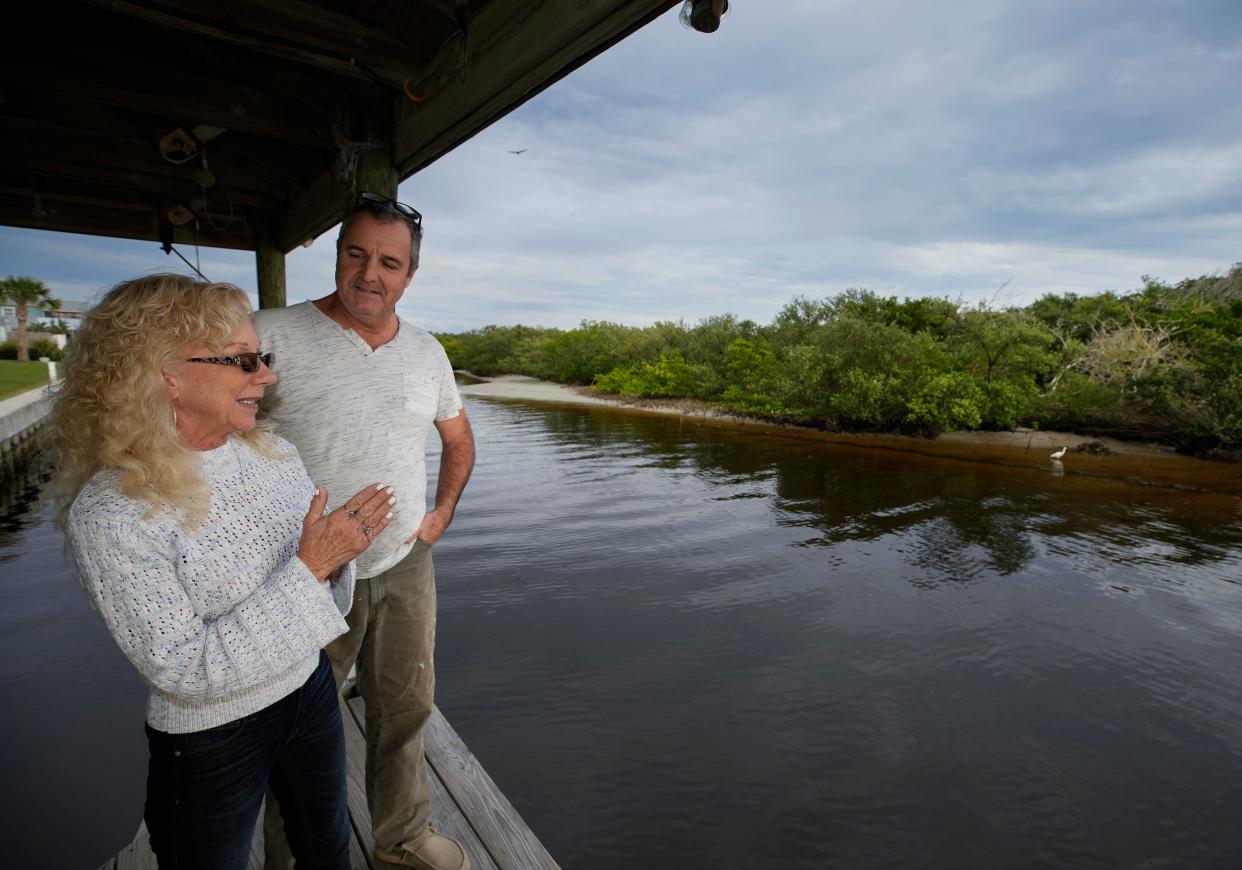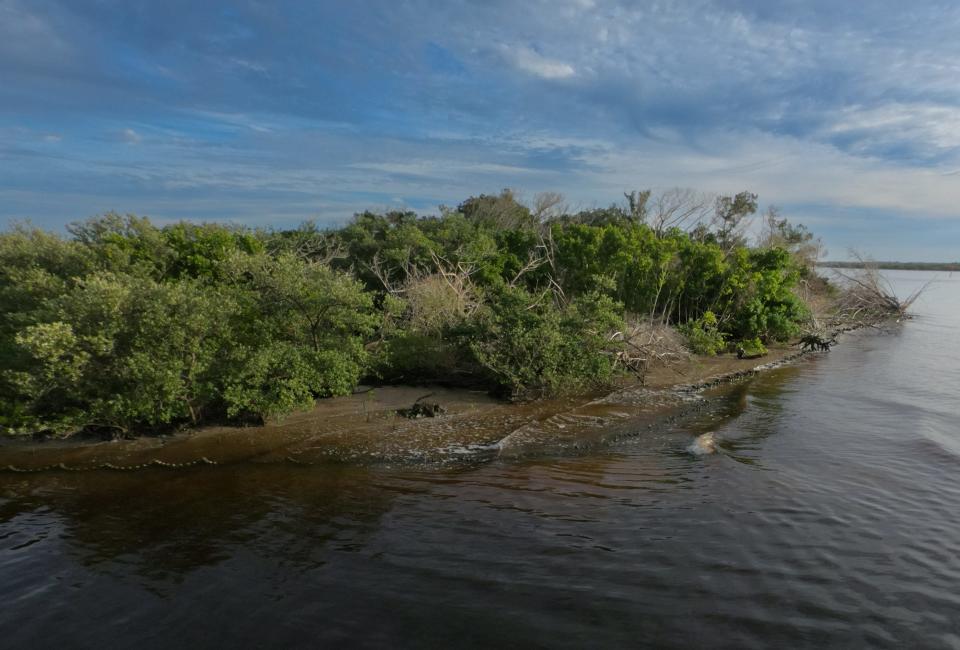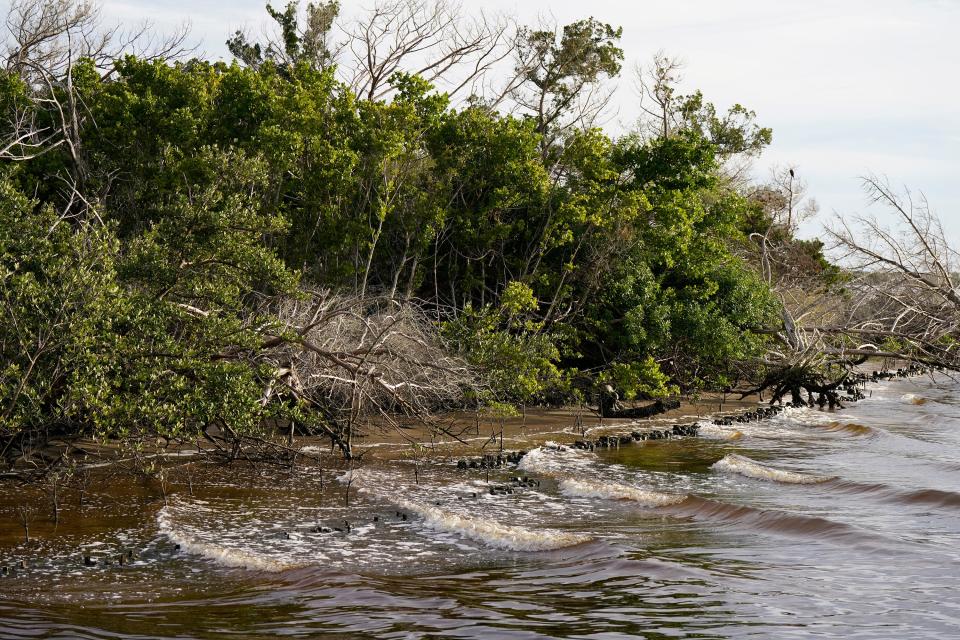Preserving the environment: Local nonprofit gets $50K for habitat restoration project

The threat of storm surges and erosion and the struggle for survival of several species in the Indian River Lagoon are not new challenges to our local environment.
But even though they are ever present, many in Volusia County — individuals and organizations — dedicate their time and efforts to preserving the area’s natural landscape.
One of these organizations is the Edgewater-based nonprofit Riverside Conservancy, which recently received a $50,000 grant to “launch the start of a three-year Indian River Lagoon habitat restoration project ... focused on salt marsh and clam restoration and regular water-quality monitoring in the lagoon.”
The donation comes from the Chuck and Ernestina Kreutzkamp Foundation — a philanthropic organization based in San Diego.
Founded in 2017, Riverside Conservancy works with cities as well as local property owners to complete shoreline restoration projects.
“We come up with a plan, and that plan can include planting mangroves, salt marsh grasses,” said Kelli McGee, Riverside Conservancy’s executive director. “And the reason we do this is because mangrove and shoreline habitat is one of the first and best defenses we have against storm surge and flooding.”

Sharks, snakes and more: What's coming to the Daytona Aquarium & Rainforest Adventure
Deciding where to do the work depends on how close the properties are to the inlets, the water’s salinity, the site's wave energy and other factors.
“We use these different techniques, depending on the slope and the conditions in different areas in the lagoon,” McGee said.
Collaborating with local property owners
One recent collaboration included the nonprofit and Ponce Inlet residents Paul and Diane Caron.
The Carons' backyard faces a natural island area, which is divided by a canal where they constantly see dolphins, manatees and bird species feeding in the area.
They thought the green space across from their backyard was part of the Ponce Inlet Preserve. But about a year and a half ago, they learned it was the last parcel of an estate.
Before purchasing what is almost 17 acres of that area, they were dealing with the issue of heavy wake from yachts and boats traveling along the canal, which led to a sediment buildup that tightened the width of the canal.
The Carons and their neighbors got together a few years ago and managed to do the necessary dredging to allow for boaters and marine life to get in and out.
Local real estate brokers and big supporters of the environment, the Carons got advice from clients who are also involved in environmental work who suggested they find someone to work on oyster reef and mangrove restoration for the area.
They learned about Riverside and invited its team to do exactly that on the property, which was completed about five months ago, “so they can do their thing and keep that property intact,” Diane Caron said.
“It’s why we moved to Ponce Inlet,” Diane Caron said about efforts to preserve the lagoon’s environment. “This is true Florida; it doesn’t get any better. This is why people want to come here so much — to see the dolphins and manatees, the beautiful marine life, the birds. That’s what it’s all about.”
In addition to the work already done, Riverside will use part of the recent grant to plant clams and saltmarsh grasses on the Carons' property.
Paul Caron said it is a “great” opportunity for Riverside to be able to finance the work with its grant money.
Natural defense: Marine Discovery Center's restored salt marsh, projects show resilience after Ian, Nicole
“We wouldn’t have been able to do what they did,” Diane Caron said. “It’s really cool. We love it.”
Importance of restoring the Indian River Lagoon’s natural habitats
The rest of the grant will continue to help Riverside’s long-term, three-year effort, which “aims to restore 1 mile of shoreline and 8 acres of clams in the northern Indian River Lagoon through strategic propagation and installation, utilizing staff and citizen-science volunteers to achieve specific objectives to strengthen the restoration of aquatic habitat within the Indian River Lagoon National Estuary Program boundary,” the organization said in a press release.
“Over the last few years there has been a massive die-off of manatees, seagrasses, clams,” McGee said. “We had all these harmful algal blooms over the last many years, which basically shaded out seagrasses. And because they are very delicate, we want to reestablish that whole ecosystem.”
According to Riverside, the lagoon has lost more than 90% of its seagrass, which served as habitat for many species and a food source for manatees. As a result of this loss, nearly 2,000 manatees have died of starvation in the lagoon since 2021.

The project will involve planting three restoration sites with submerged marsh grasses to help restore the lagoon’s food chain, as well as to reintroduce clams into an area where water-quality issues have eliminated much of the mollusk population.
“Clams have been found to assist with seagrass resilience, so we hope that planting clams and marsh grasses this coming year in targeted areas will lead to seagrass restoration next year,” McGee said in the press release. “Together, the CEK and Litowitz Foundations will help bring back submerged vegetation, which provides food for manatees, green sea turtles and many other species.”
The Litowitz Foundation, based in Miami, matched the grant given by CEK, according to Riverside.
Riverside’s team has been working on other areas along the lagoon. McGee said it has recently completed replanting a mile of mangroves.
“We are piece by piece creating more habitat,” McGee said. “Eighty percent of all the (lagoon) species rely on or spend some part of their life cycles around mangrove roots.”
While the money guarantees the project’s “foundational” first year, McGee said there will be a need for more funding in the next two years.
Manatees: Cooler temps mean more manatees at Blue Spring State Park in Orange City
“Seagrass restoration is very difficult,” McGee said, adding that replanting clams and salt marsh grasses will be part of the project’s first year. “We plan on being out there every week. So we’ll absolutely need additional funding.”
She is confident and thankful for the support Riverside has seen from other organizations and the local community.
“We are basically building on this good faith and generosity of our literal neighbors and people in the area who see the value, who want to help restore habitats,” McGee said.
This article originally appeared on The Daytona Beach News-Journal: Indian River Lagoon restoration project receives grant funding

